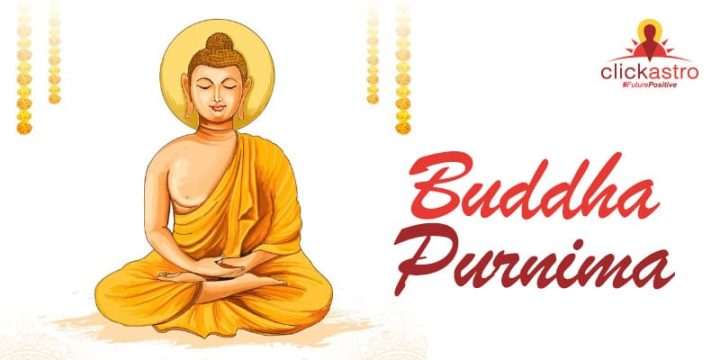Introduction
On a full moon night over 2,500 years ago, a prince-turned-monk sat beneath a Bodhi tree and awakened to a truth that would forever change the course of human history. That moment of profound realisation—when Siddhartha Gautama became the Buddha—is commemorated each year as Buddha Purnima. Celebrated with devotion, reflection, and acts of compassion, this auspicious day invites us to pause and reconnect with the timeless wisdom that continues to guide millions worldwide.
As per the traditional
Hindu lunar calendar, Buddha Purnima is observed on the Purnima Tithi (Full Moon Day) of the month of Vaishakha. This usually falls in April or May in the Gregorian calendar, depending on the lunar cycle.
In 2025, Buddha Purnima, also known as Vesak or Buddha Jayanti, will be observed on Monday, May 12.
- Buddha Purnima Date & Timing
- Sunrise: May 12, 05:51 AM.
- Sunset: May 12, 06:55 PM
- Purnima Tithi Begins: May 11, 2025, at 08:01 PM
- Purnima Tithi Ends: May 12, 2025, at 10:25 PM
Significance of Buddha Purnima
Buddha Purnima commemorates the three major events in the life of Gautama Buddha—his birth, enlightenment (Nirvana), and final passing (Mahaparinirvana)—all believed to have occurred on the same full moon day in the lunar month of Vaishakha.
Born as Prince Siddhartha Gautama in Lumbini (present-day Nepal) around 563 BCE, the Buddha’s birth is celebrated as the arrival of one of the greatest spiritual leaders in human history. His early life of luxury, followed by a deep awakening to the suffering in the world, marked the beginning of a path toward truth and compassion.
At the age of 35, Siddhartha attained enlightenment under the Bodhi tree in Bodh Gaya, becoming Buddha—the Awakened One. This moment symbolizes the victory of wisdom over ignorance and forms the core of Buddhist practice: the pursuit of inner awakening and liberation from suffering.
At the age of 80, Buddha passed away in Kushinagar, attaining Mahaparinirvana—freedom from the cycle of birth, death, and rebirth. This marks the final teaching of impermanence and the ultimate peace that comes with detachment.
Today, Buddha Purnima serves as a reminder of values espoused by Buddha that are universally relevant:
- Compassion toward all living beings
- Mindfulness in thoughts, speech, and action
- Wisdom to see things as they are
- Detachment from material and emotional cravings
Buddha Purnima exists as a day for introspection, meditation, charity, and learning, encouraging believers to walk the path of the Middle Way—a balanced life of discipline, ethics, and insight.
Traditions & Celebrations
On Buddha Purnima, devotees across the world engage in a range of spiritual and cultural activities to honour the life and teachings of Lord Buddha. The day typically begins with early morning visits to Buddhist temples, where people offer prayers, chant sacred texts, and participate in meditation sessions. Temples and monasteries are decorated with flowers, prayer flags, and lanterns, creating a serene and festive atmosphere.
One of the most revered rituals is the worship of the Bodhi tree, which symbolizes the place of Buddha’s enlightenment. Devotees light lamps, offer incense, pour water at the roots, and circumambulate the tree as a mark of respect. Acts of charity are central to the observance of Buddha Purnima. People distribute food, clothes, and money to the poor and needy, and many also release birds or animals as a symbolic act of compassion and freedom.
Fasting or consuming a simple vegetarian meal is commonly practised as a form of self-discipline and purity. Devotees listen to sermons and read from sacred Buddhist texts, reflecting on the core teachings of the Buddha—especially the Four Noble Truths and the Eightfold Path. Special processions and cultural programs are held in some regions, and in countries like Sri Lanka, Thailand, and Myanmar, the day is marked by the lighting of lanterns and community feasts.
In India, especially in places like Bodh Gaya, Sarnath, and Kushinagar, large gatherings of monks and pilgrims create a spiritual ambience with collective chanting and prayer meetings. The mood of the day is one of peace, reverence, and introspection, inviting everyone to walk a little closer toward inner awareness and compassion.
Core Teachings to Reflect Upon
On the occasion of Buddha Purnima, the core teachings of Lord Buddha offer a timeless guide for self-reflection and spiritual growth. At the heart of his message is the understanding that life is marked by suffering, but there is a path to overcome it. This is expressed through the Four Noble Truths: the truth of suffering, the cause of suffering, the end of suffering, and the path that leads to its end. These truths encourage individuals to look within, recognize the nature of their desires and attachments, and understand how these contribute to pain and dissatisfaction.
To walk the path toward liberation, Buddha taught the Noble Eightfold Path—a practical framework for ethical and mindful living. It begins with Right View and Right Intention, which help cultivate wisdom. Right Speech, Right Action, and Right Livelihood promote moral conduct and encourage living in harmony with others. Right Effort, Right Mindfulness, and Right Concentration guide mental discipline and help develop clarity, focus, and inner peace.
Reflecting on these teachings during Buddha Purnima reminds us to live with compassion, awareness, and balance. It is a time to let go of negative emotions, practice kindness, and renew our commitment to personal and collective well-being. These teachings are not just religious ideals but practical steps anyone can follow to lead a more conscious and meaningful life.
Buddha Purnima Around the Globe
Buddha Purnima is celebrated with great devotion across the globe, though the customs and rituals vary depending on cultural and regional traditions. In India, the birthplace of Buddha, major celebrations take place in places like Bodh Gaya, Sarnath, and Kushinagar. Pilgrims and monks gather at these sacred sites to chant, meditate, and participate in special ceremonies. Temples are decorated, and processions are held to honour Buddha’s life and teachings.
In Sri Lanka, the festival is called Vesak and is one of the most important religious holidays. Homes, streets, and temples are adorned with colourful lanterns and flags. Devotees observe sil, or religious vows, spend the day in meditation, and engage in acts of charity. Similar customs are seen in Myanmar, Thailand, and Cambodia, where people visit monasteries, offer alms to monks, and release caged animals as a symbolic act of compassion.
In Nepal, where Siddhartha Gautama was born, Buddha Purnima is a national holiday. People visit the Maya Devi Temple in Lumbini, believed to be the exact birthplace of the Buddha and take part in prayers, processions, and peace marches. In Japan, the celebration is known as Hana Matsuri and takes place on April 8. Small statues of baby Buddha are bathed in sweet tea as part of a traditional ritual symbolizing purification and reverence.
In South Korea, the day is marked by the Lotus Lantern Festival, during which thousands of colourful lanterns light up temples and city streets, creating a peaceful and festive environment. In Western countries, where Buddhist communities are growing, celebrations are often held in cultural centres and temples, combining traditional rituals with public talks, meditation workshops, and interfaith gatherings.
Though the customs may differ, the essence of Buddha Purnima remains the same worldwide—a day to honour the life, enlightenment, and teachings of the Buddha and to reflect on how his message of peace, mindfulness, and compassion continues to inspire people across cultures and continents.
Conclusion
Buddha Purnima is more than a commemoration of a historical figure; it is a living reminder of the path to inner peace and universal compassion. As the full moon lights up the night sky, it encourages us to illuminate our minds with wisdom, kindness, and awareness. Whether through silent meditation, acts of charity, or simply pausing to reflect on the Buddha’s teachings, this sacred day offers an opportunity to reconnect with what truly matters. In a world often caught in chaos and distraction, Buddha Purnima gently calls us back to the stillness within—a space where clarity, understanding, and harmony can flourish.








